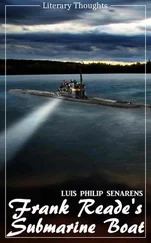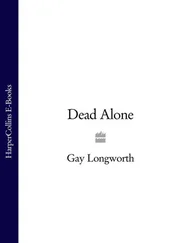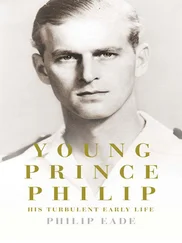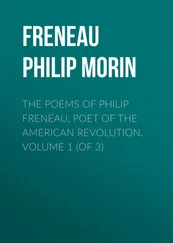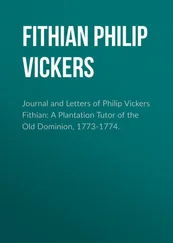At the same time, special military equipment (like trench telescopes) was imported, and efforts were made to modernize weaponry and expand Russian arms production. The tax register for the long-established small-arms manufacturing centre of Tula, south of Moscow, which was to become the Russian Birmingham or Sheffield, shows that in 1625 the town boasted only 250 households liable to tax, besides 34 others and 21 empty workshops. Its inhabitants already included foreigners — presumably technical experts, musketeers and gunners to advise on and test-fire the guns produced. 21But in 1632 the government commissioned a Dutchman, Andrew Vinius, to build a foundry using hydraulic power. Dozens of craftsmen were recruited abroad to teach Russians how to make guns, locks and swords to modern designs, and by the early eighteenth century Tula was to boast well over 1,000 gunsmiths producing 15,000 muskets a year as well as other weaponry. Nor was Tula the only arms-manufacturing centre, even in the mid seventeenth century. In 1648 a state musket factory was established near Moscow, and by 1653 26,000 flintlock muskets had been produced there, as well as numbers of the less efficient matchlocks. Even so, arms orders had to be placed abroad to bring Russia’s small-arms stocks to a level for war. 22At the same time mineral-prospecting was encouraged, and specialist metallurgists were hired from abroad. Strategic materials like iron were also imported in increased quantities, for, although successful efforts were made to find and exploit deposits of copper, good-quality iron was not to be found west of the Urals, and the deposits in the Urals were too difficult of access. Even so it could be said that the origins of Russia’s modern metallurgical industry as well as its arms industry date from this time. And the development of both the army and the arms industry was further stimulated by the Thirteen Years War, in which Russia at last gained the upper hand against its rival Poland.
The war was precipitated by developments in Ukraine. The Orthodox population there had long been resentful of the Catholic Church’s campaign to drive them into the Catholic fold. Their discontent had reached new heights early in the century when Moscow, their only possible protector, had been preoccupied with its own troubles. The Ukrainian Orthodox were unable to combat the pressure on their own. They lacked organization and, though the merchant community formed confraternities and maintained some schools as well as churches, they could not compete with the Catholics in educational provision. They also lacked armed power — a resource commonly used to resolve spiritual differences in that era. The situation changed, however, when the Cossacks of Ukraine became restive, not only over the religious question, but also over land rights and registration for military service. Polish landlords had been intruding into the region, trying to establish great estates and introduce serfdom. This threatened the free farmer-warriors of the frontier zone. Furthermore, many of them were denied inclusion on the register of paid-service Cossacks, and this implied loss of their liberties as Cossacks. The coalescing of these different streams of discontent eventually triggered a huge rebellion against the Polish government. It began early in 1648. 23
The leader, Bogdan Khmelnytsky, was a Cossack officer, and the rising was proclaimed as a ‘crusade’. There being no Saracens or Turks within reach, the rebels’ hatred was directed against Jews, who had been encouraged to settle in large numbers in Ukraine, as well as against the Poles themselves. This strategem pleased the Orthodox merchants, who were in competition with the Jews, as it did the Cossack rank-and-file and peasants, who tended to regard Jews as agents of the Polish lords, which many of them in fact were. 24The irony of the situation was that Khmelnytsky, recognizing that the Cossacks could not resist the Poles alone, enlisted the help of the Muslim Khan of the Crimea, a subject of the Sultan, who joined the ‘crusade’ in the expectation of plunder and prisoners to ransom or sell into slavery. Cynicism was a feature of seventeenth-century politics, albeit less common than in today’s.
The Cossacks defeated the divided and ill-led Polish army sent against them. This prompted a flood of support from the lower orders, and the biggest anti-Jewish pogroms before Nazi Germany’s invasion of eastern Europe nearly three centuries later. The Polish government was slow to organize an effective response, but in June 1648 an apprehensive Khmelnytsky petitioned the Tsar: ‘Our desire is to have a Sovereign Autocrat, an Orthodox Christian Tsar such as Your Majesty, to rule our land… If Your Majesty… will only attack [Poland] without delay, we shall be ready to serve your Tsarish Majesty, together with the entire Zaporozhian [Cossack] Host…’ 25
The Tsar, however, had troubles of his own. That same month a bloody taxation riot took place in Moscow, in which senior officials were lynched and the Tsar himself was confronted by the mob. The affair forced him to replace his chief minister and commit himself to a broad review of Russia’s laws. This necessitated the calling of another Assembly of the Land. This much misunderstood institution, so far from being a parliament, possessed no powers. It was an assembly of representatives brought to Moscow, in this case to inform the government about local practices and to receive instructions as to what laws and rules they were to implement on their return. There were protracted consultations with interested parties inside and outside the Assembly before the issuing of a new code of laws, which was published in May 1649.
At that point another letter from Khmelnytsky was delivered in Moscow. It begged the Tsar to intervene against Poland and take Ukraine’s Orthdox population under his protection. But the Tsar was still not ready. Claiming he was obliged by treaty to remain at peace with Poland, he confined himself to giving moral support and furnishing some supplies. The Ukrainian Cossacks would have to shed their own blood for their cause, while Russia conserved its strength and swelled its armoury.
In the event, political disarray in Poland allowed the Cossacks to sweep on as far as Lvov. It was to be 1651 before, deserted by the Tatars, they were beaten on the rain-drenched field of Berestechko. The struggle, however, continued, hostilities being punctuated from time to time by negotiations over a possible settlement. Meanwhile Khmelnytsky’s offer to the Tsar remained open, and in 1653, perhaps fearing that the opportunity might disappear if he procrastinated too long, the cautious Tsar at last committed himself to war with Poland — though not before taking careful soundings on an individual basis of an Assembly of the Land. This time, Russia’s treaty of ‘eternal peace’ with Poland was not regarded as an impediment. The Cossacks, it was argued, had already shaken off Polish rule and were an independent people. Besides, the Poles had committed such grave offences against Orthodox Christians in Ukraine as to cry out for retaliation. The following January the question of allegiance was put to a Cossack assembly (Rada) at Pereiaslav.
The summoning drums had sounded for an hour before Khmelnytsky appeared, and when the crowd fell silent he put the question. In essence, the Cossacks needed a protector. They could opt for the Sultan (who had already made overtures to them), the Khan of the Crimea, the King of Poland (who was willing to accept them back under his wing) or the Tsar of Russia. Whom did they choose? The cry went up for the Tsar. Khmelnytsky then led Cossack commanders into the church, where each in turn swore oaths of loyalty to the Tsar, and the Tsar’s representative formally invested Khmelnytsky with a banner, mace, cloak and cap — his new insignia as hetman, or commander.
Читать дальше





![Stephan Orth - Behind Putin's Curtain - Friendships and Misadventures Inside Russia [aka Couchsurfing in Russia]](/books/415210/stephan-orth-behind-putin-s-curtain-friendships-a-thumb.webp)
